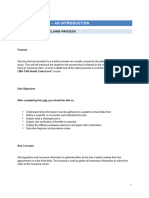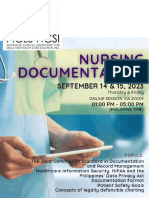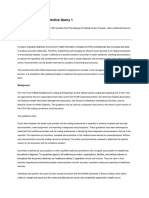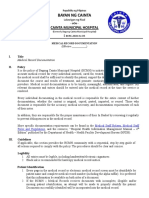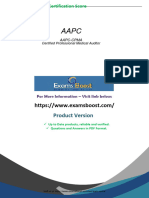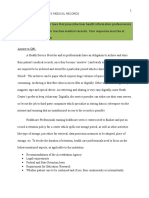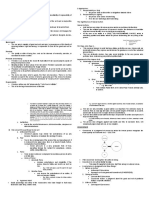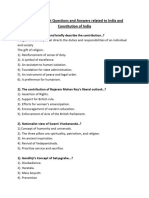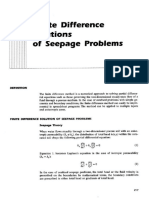0% found this document useful (0 votes)
60 views4 pagesCompliant Retrospective Query Processes
The document discusses rules and best practices around retrospective clinical documentation queries. Some key points:
- Retrospective queries are allowed as long as any response is added as an addendum to the medical record within a reasonable timeframe, such as 30-90 days.
- Only the treating physician can amend the medical record in response to a query. Records cannot be altered by non-treating providers.
- Addendums, corrections, and late entries are acceptable ways to alter documentation as long as they follow principles of legibility, signage, and timing. Backdating or falsifying records is prohibited.
Uploaded by
robertpilcher73Copyright
© © All Rights Reserved
We take content rights seriously. If you suspect this is your content, claim it here.
Available Formats
Download as DOCX, PDF, TXT or read online on Scribd
0% found this document useful (0 votes)
60 views4 pagesCompliant Retrospective Query Processes
The document discusses rules and best practices around retrospective clinical documentation queries. Some key points:
- Retrospective queries are allowed as long as any response is added as an addendum to the medical record within a reasonable timeframe, such as 30-90 days.
- Only the treating physician can amend the medical record in response to a query. Records cannot be altered by non-treating providers.
- Addendums, corrections, and late entries are acceptable ways to alter documentation as long as they follow principles of legibility, signage, and timing. Backdating or falsifying records is prohibited.
Uploaded by
robertpilcher73Copyright
© © All Rights Reserved
We take content rights seriously. If you suspect this is your content, claim it here.
Available Formats
Download as DOCX, PDF, TXT or read online on Scribd
/ 4


